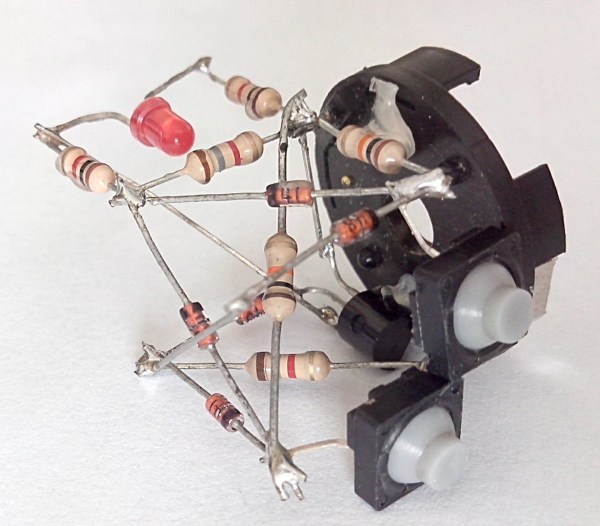Check out this odd different looking guitar practice amp. It looks like a professionally manufactured product but it certainly is not. [Bradley] made it himself, not just a little bit of it either, all of it.
One of the first things you notice is the quilted maple wood grain of the case. There is no veneer here, this started out as a solid maple block. The front radius was shaped and the recesses for the control knobs and input jack were bored out using a forstner bit. The case was sanded smooth and several coats of high gloss tung oil was rubbed on to give the wood a perfect finish. A small piece of grill cloth protects the speaker while adding a little more class to the amp. The bottom of the case is actually a cover for a computer hard drive. A rectangular hole cut in the hard drive cover makes way for a 9 volt battery compartment.

There are two control potentiometers, one for volume and one for gain. Any old knobs wouldn’t do for this project. [Bradley] knurled and turned his own aluminum knobs and they look awesome! The units power is turned on when the guitar cord is plugged in. An LED not only indicates that the power is on but it also gets brighter with the volume input from the guitar. The LED also pulses if two strings are out of tune with each other giving the guitarist an opportunity to tune one of the strings until the LED stops pulsing. When it is time for some private jamming headphones can be plugged into the amp and doing so cuts power to the speaker.
The electronic circuitry is [Bradley’s] design also, but unfortunately he doesn’t share the schematic. I suppose he wants to keep his amp one-of-a-kind.


















